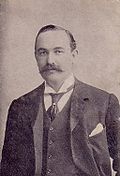| Islington East | |
|---|---|
| Former borough constituency for the House of Commons | |
| 1885–February 1974 | |
| Seats | one |
| Created from | Finsbury |
| Replaced by | Islington Central and Islington North |
Islington East was a constituency which returned one Member of Parliament (MP) to the House of Commons of the Parliament of the United Kingdom from 1885, until it was abolished for the February 1974 general election.
Contents
- Boundaries
- 1885–1918
- 1918–1974
- Members of Parliament
- Election results
- Elections in the 1880s
- Elections in the 1890s
- Elections in the 1900s
- Elections in the 1910s
- Elections in the 1920s
- Elections in the 1930s
- Elections in the 1940s
- Elections in the 1950s
- Elections in the 1960s
- Elections in the 1970s
- See also
- References










